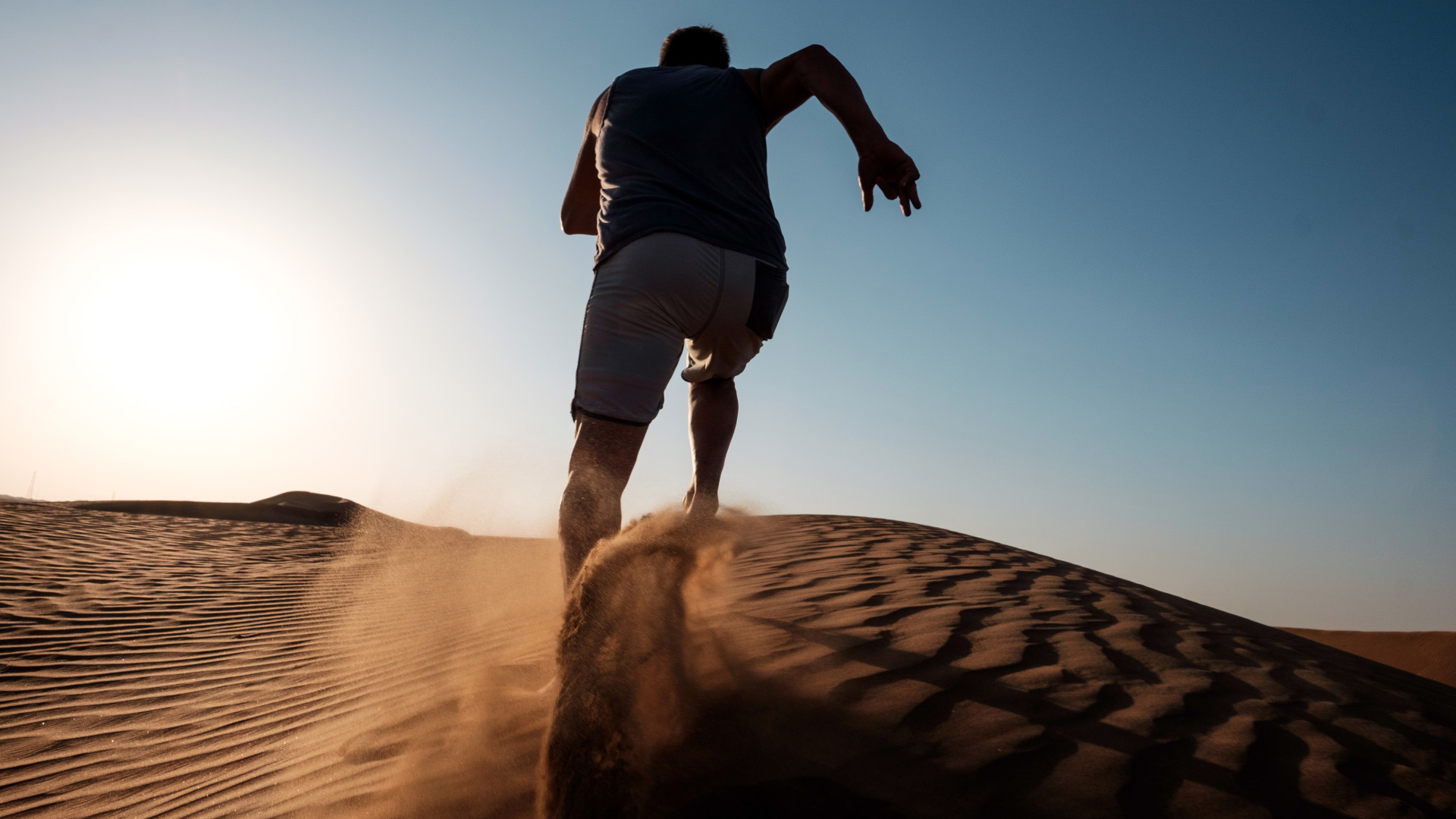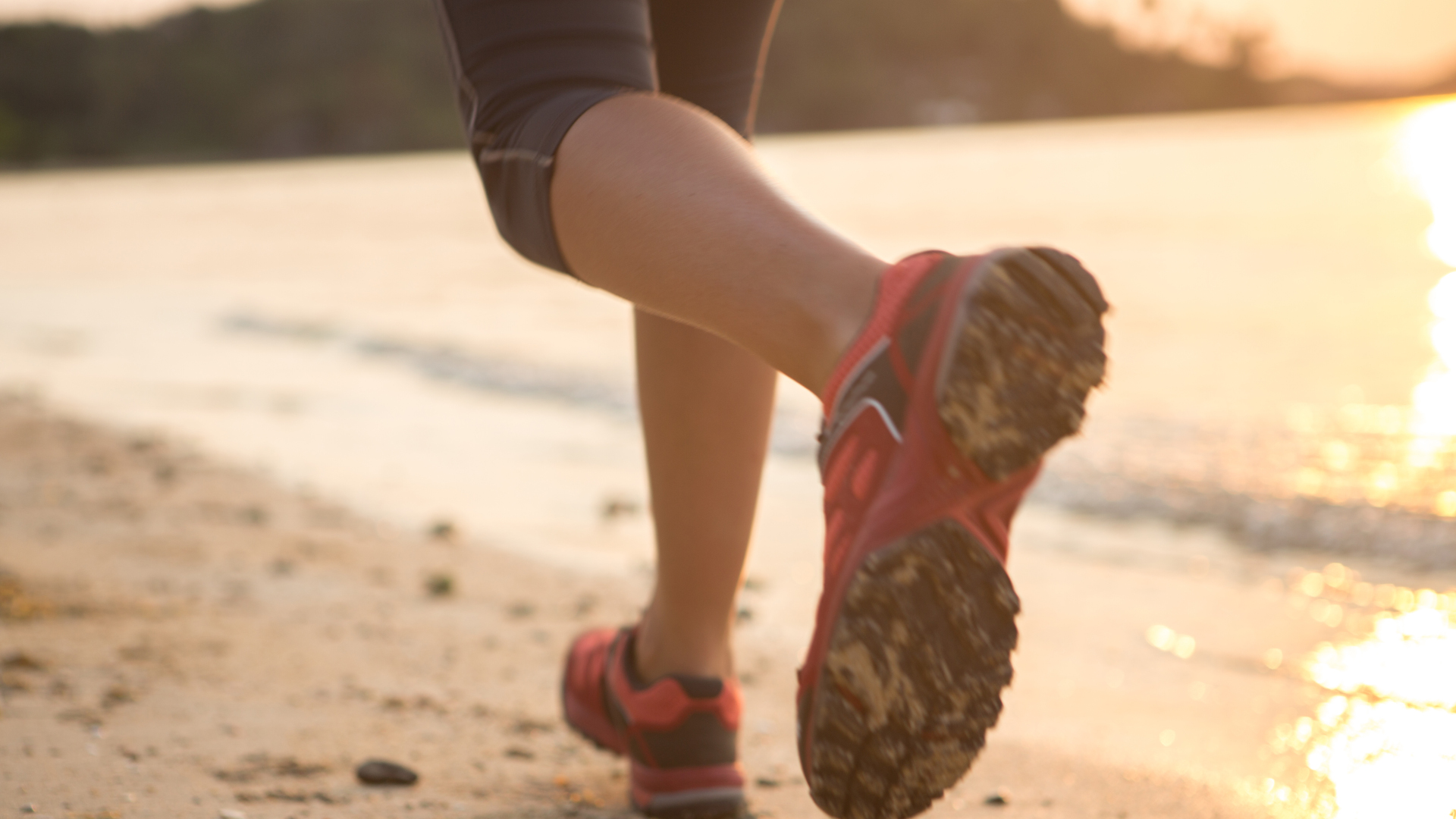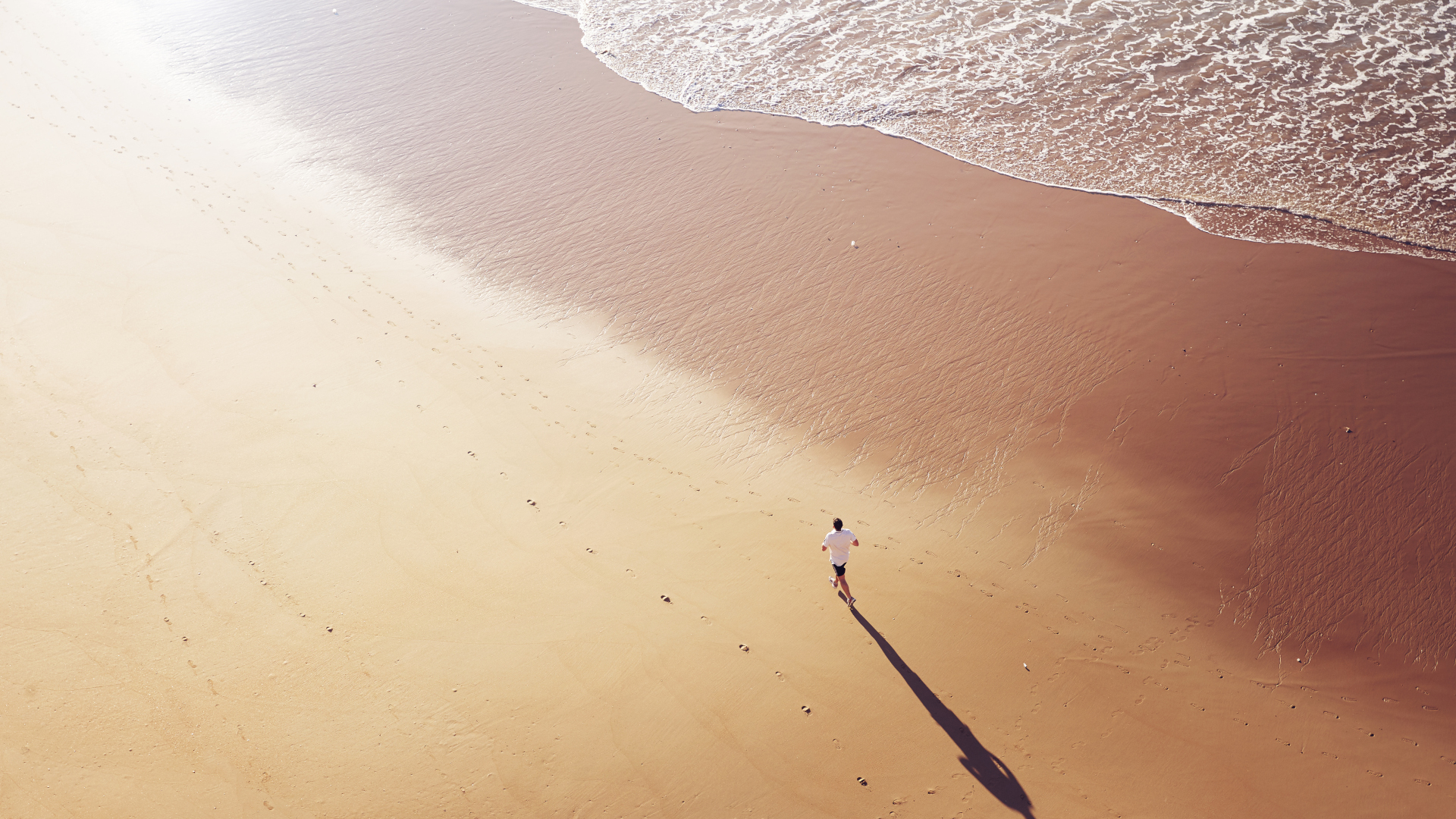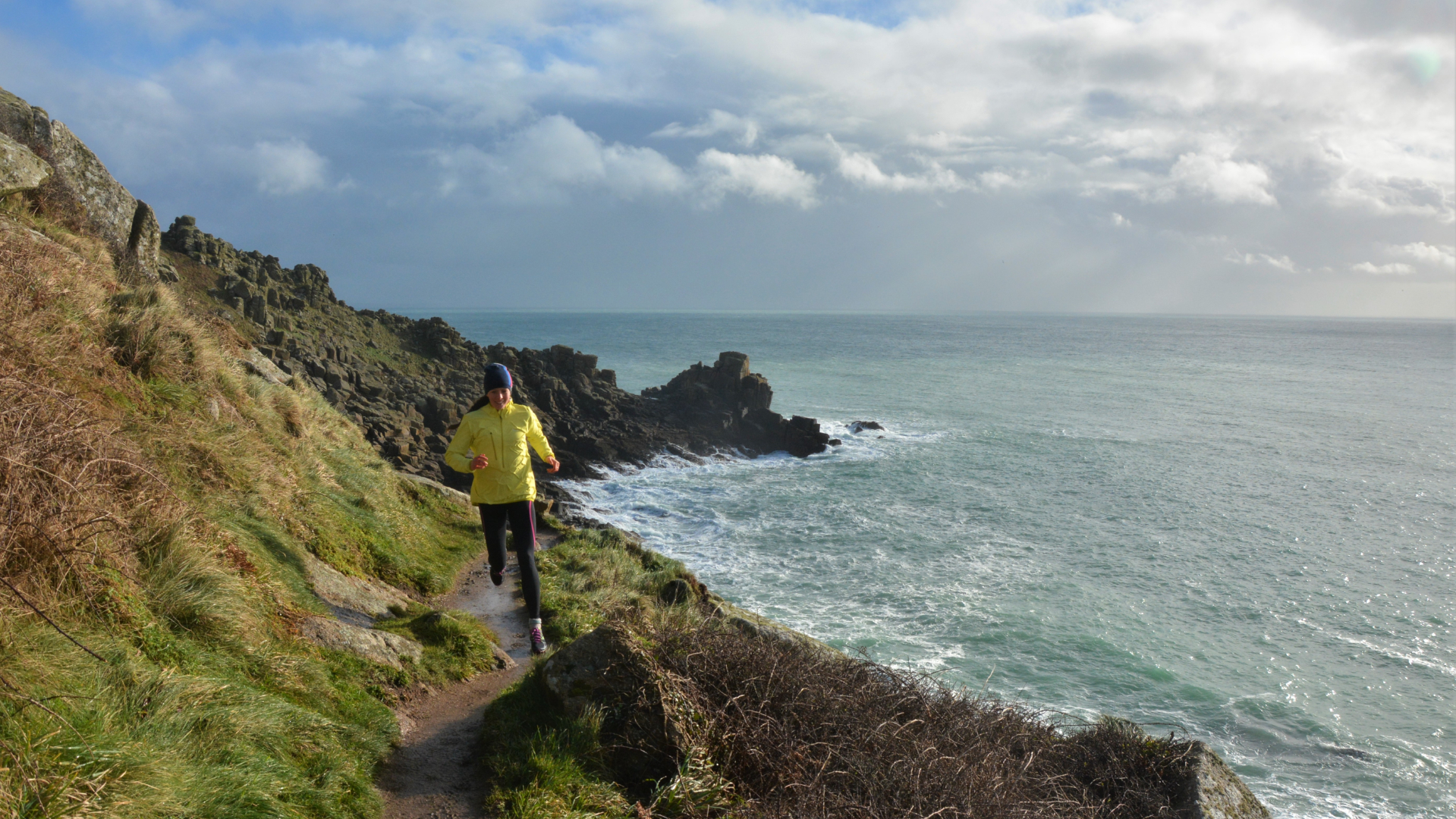Running on sand: a guide to desert and beach running
Running on sand takes more effort and is lower impact than on other surfaces, but you’ll want to change your approach to reap the benefits

When you’re planning a beach vacation, a desert road trip, or already live somewhere coastal, it’s tempting to want to take your daily runs onto the sand where you can enjoy a softer surface underfoot. But the reality of running on sand often doesn’t match the fantasy, as each step feels like you have concrete shoes on your feet and your self-esteem takes a battering when you’re completely out of puff after just a few minutes, and significantly more tired the following day.
It’s true that running on sand is harder than on other surfaces, whether you’re used to the road or the trails, but it also offers some remarkable benefits and if you change a few things about the way you run – such as your pace and warm up – you might find that you can actually enjoy beach running or desert running and it may even improve your running performance elsewhere.
Why is running on sand so hard?

Even hard packed sand is softer than tarmac. When you run on the road, the unforgiving surface beneath you gives you good rebound each time your foot strikes the ground, which means you keep more kinesthetic energy and don’t have to work quite as hard to provide your own locomotion. Meanwhile, sand absorbs more energy and takes additional effort to keep moving forward, to the tune of about 60% more energy expenditure according to a study in the Journal of Experimental Biology which measured the effort of running on sand versus a hard surface by measuring oxygen consumption required for each.
Also, sand is not only uneven, but it tends to move under your feet, so it requires more concentration and finesse to travel across at faster speeds to avoid losing your balance or rolling an ankle.
Why try running on sand?

In addition to enjoying beautiful scenery of sand dunes and hearing the waves crashing up on the shore, there are some real physiological arguments for adding some beach runs into your routine.
First, it’s lower impact which means that even though you have to work harder, it’s kinder on your joints. A small 2017 study by the School of Human Sciences found that running on sand reduces the musculoskeletal impact of running, resulting in less muscle damage and soreness.
Running on sand is also a better cardiovascular workout than other soft surfaces. A 2013 study published in the Journal of Strength and Conditioning Research compared sand running to running on grass and concluded that because less energy is returned to your body with each step, it requires a significantly higher heart rate and produces greater improvements in VO2 max. Regular beach runners in this study also saw improvements once they went back to other surfaces.
All the latest inspiration, tips and guides to help you plan your next Advnture!

Then there’s the argument that it’s more strengthening for your leg muscles, which are always going to get a good workout when you’re running, but a study in the European Journal of Applied Physiology suggests that your hamstrings, quadriceps and hip flexors all work harder on sand than they do on tarmac largely because your hip and knee are forced to work through a great range of motion to push up out of the sand, and also because they’re working harder to stabilize you. In road running, you might be able to bypass certain muscles and rely mostly on your quads, whereas beach running will highlight weak spots where you need to do some training.
Finally, if you're running at the beach, you can take a dip! In addition to those physical arguments for running on sand, you may also be able to combine your run with a lovely spot of wild swimming to cool off afterwards.
How to run on sand

Because running on sand is harder than other surfaces, it can admittedly be a bit discouraging in the beginning, especially if you’re used to being able to run far and at a good pace, but use the following measures and you’ll be able to get the most out of beach running.
1. Consider footwear
You don’t have to wear shoes for beach running, which might be part of the appeal for you, but it’s also not required that you go barefoot. What type of footwear you choose depends on the type of sand you’re running on. Barefoot running is thought by proponents to encourage a more natural running style, but you might do it for practical reasons too – if you’re running in very soft sand, either on the beach or in the desert, it will be annoying to get it inside your shoes.
If you’re choosing to run closer to the shoreline where the sand is firmer, there may also be more rocks and shells that can hurt your feet, so you might want to wear your best trail running shoes or perhaps try some barefoot running shoes since you may need less protection than on a rocky trail.

2. Warm up properly
You’ll want to begin with a longer, slower warm up than you’re probably used to, to get used to a whole new feel and style of running. The 2013 study we cited earlier concluded that everything changes when you run in sand, from your cadence to your posture, so you’ll want to ease in and drop your expectations for yourself.
3. Go slowly
There are a couple of arguments for slowing down when running in sand. First, just because beach running is lower impact, it doesn’t mean you’re immune to injury. Though your joints will take less of a beating with each foot strike, the risk of turning an ankle is higher in soft sand. Second, as we’ve already explained, it’s quite a bit harder so you shouldn’t expect to go at your regular pace or you’ll be frustrated. And since the studies show that running on sand is a better workout, you can trust that you’re getting more out of each step anyway.

4. Go for time not distance
This ties in with the previous two points, but if you’re used to running 10km in an hour on the trails, don’t aim for the same distance on sand. Instead, consider running for an hour and don’t worry about how far you go. If you can’t go for a full hour, finish early and consider that you just got more for your money.
5. Balance yourself on sloped beaches
Lots of beaches have some degree of angle so you’ll be running slightly asymmetrically. With a gentle slope, this isn’t a huge deal, but make sure that you turn around and run back in the same direction for roughly the same time so that both legs get an equal workout.

6. Check the tide tables
As with any coastal activities in tidal areas, you’ll want to make sure you know how to read a tide chart and check the area where you’ll be running so you don’t end up stranded, or worse.
7. Use sun protection
Protecting your skin goes for any outdoor running, but when you’re close to the water the sun’s harmful rays will be amplified as they reflect off the surface of the water. Wear sunscreen and sunglasses and consider a good sun hat too.
Julia Clarke is a staff writer for Advnture.com and the author of the book Restorative Yoga for Beginners. She loves to explore mountains on foot, bike, skis and belay and then recover on the the yoga mat. Julia graduated with a degree in journalism in 2004 and spent eight years working as a radio presenter in Kansas City, Vermont, Boston and New York City before discovering the joys of the Rocky Mountains. She then detoured west to Colorado and enjoyed 11 years teaching yoga in Vail before returning to her hometown of Glasgow, Scotland in 2020 to focus on family and writing.

